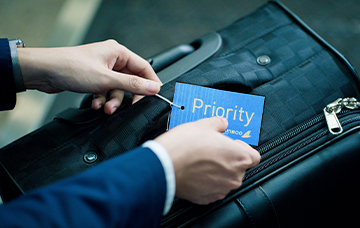Bamboo Airways Launches Peach and Apricot Blossom Transportation Service for Lunar New Year 2026
Bamboo Airways is pleased to announce the official launch of our special peach and apricot blossom transportation service for Tet 2026. Let Bamboo bring the colors of spring to your home, making every journey full of warmth and love.
Peach & Apricot Blossom Transportation for Lunar New Year 2026
As the festive spirit of Tet fills every street, the essence of spring brings joy, reunion, and heartfelt connection. On each homebound journey, Bamboo Airways accompanies you in carrying vibrant branches of peach and apricot blossoms—symbols of luck, happiness, and a flourishing new year—back to your loved ones, ensuring that every flight is filled with the true spirit of Tet.

To share the beauty of spring with every home, Bamboo Airways offers blossom transportation as checked baggage on all domestic flights:
- Sales period: 15 January 2026 – 20 February 2026
- Travel period: 19 January 2026 – 21 February 2026
- Maximum size: 150cm x 40cm x 40cm
- Transportation method: Checked baggage on domestic flights
- Service details:
Each passenger may transport one bundle (maximum 2 branches per bundle) at a cost of 486,000 VND/bundle (including 8% VAT).
- Each flight accommodates up to 30 bundles. For additional bundles presented at the airport, acceptance will depend on the airline’s operational capacity.
- Packaging requirements: Passengers must tie the branches securely into a bundle and wrap them appropriately. Trees with pots or soil are not accepted, including via cargo services.
Due to limited capacity, passengers wishing to transport peach or apricot blossoms are encouraged to contact Bamboo Airways’ ticket offices, authorized agents, or our national hotline 1900 1166 to purchase the transportation package in advance.
Celebrate the Lunar New Year 2026 with Bamboo Airways—bringing the vibrant spirit of spring home with ease, convenience, and safety.
Contact Information
To inquire about detailed information regarding Bamboo Airways' products and services, please contact:
Facebook: www.fb.com/BambooAirwaysFanpage/
Hotline: +84 1900 1166
Email: 19001166@bambooairways.com














